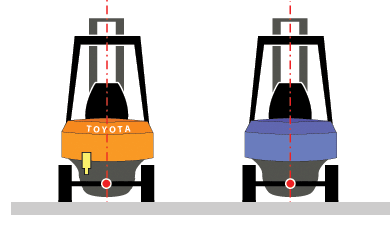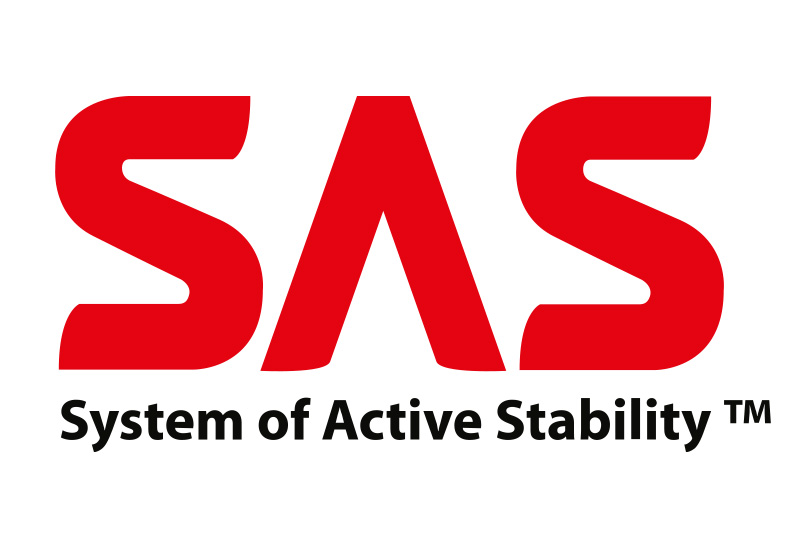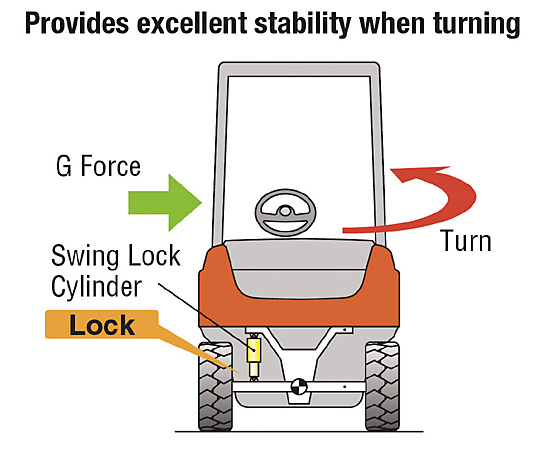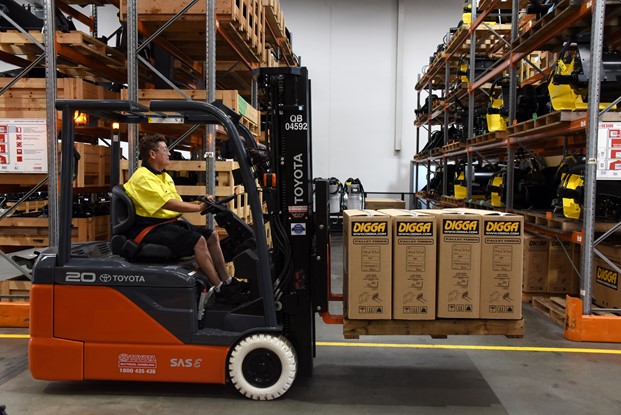- Toyota introduced the world's first integral overhead guard, body and frame on its 2-Series forklift range in 1972. Further safety improvements were made in 1982 with an updated mast design which saw the removal of the centre cylinder, providing vastly improved operator visibility. In 1998, further innovations saw Toyota's patented System of Active Stability™ (SAS™) introduced across selected 7-Series forklift models. This was the first system in the world to monitor and control the forklift through a combination of advanced sensors linked to an on-board controller, enabling superb load-handling performance with outstanding safety. Toyota’s SAS™ concept took more than 65 dedicated engineers over two years to design and is protected by over 250 patents.
- Toyota's System of Active Stability (SAS) is the first system in the world to monitor and control the forklift through a combination of advanced sensors linked to an on-board controller, enabling superb load-handling performance with outstanding safety. Since its introduction in 1998, over 500,000 SAS equipped forklifts have been sold around the world.
- SAS is similar in concept to Anti-Lock Brake Systems (ABS) and Vehicle Stability Control Systems, in that it significantly contributes to accident prevention by enhancing control in the stability range of the forklift before it enters into a range of unstable operation.
-
Toyota has accomplished this function through the synergistic total of seven WORLD FIRST innovations. SAS sensors detect motion during operation and the computer analyses the potential for a tipover. If the computer determines that the potential for a tipover exists, it sends a signal to the appropriate actuators which then operate to minimise the potential for a tipover. All of these innovations are based on the fact that the stability of a forklift changes constantly due to shifts in the balance of the load coupled with the speed and turning rate of the forklift.

- Other features of Toyota's System of Active Stability include Mast Front Tilt Angle Control, Mast Rear Tilt Angle Control, and Fork Levelling Control.








 It is obvious that safety has been a prominent theme throughout the evolution of the forklift. With Toyota, the importance of safety can be seen in the providing of an overhead guard as standard in the '70's, the introduction of the Wide Visible Mast in the '80's, and the introduction of the Operator Restraint Seat (ORS) from the start of 1998. In November 1998, Toyota again revolutionised the concept of forklift safety and productivity with the release of its 7-Series range of forklifts, and their world's first feature of "System of Active Stability" (SAS).
It is obvious that safety has been a prominent theme throughout the evolution of the forklift. With Toyota, the importance of safety can be seen in the providing of an overhead guard as standard in the '70's, the introduction of the Wide Visible Mast in the '80's, and the introduction of the Operator Restraint Seat (ORS) from the start of 1998. In November 1998, Toyota again revolutionised the concept of forklift safety and productivity with the release of its 7-Series range of forklifts, and their world's first feature of "System of Active Stability" (SAS).





